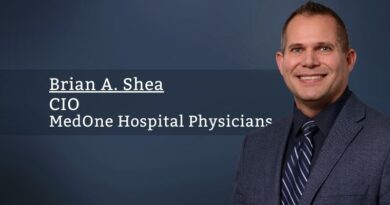Unintended Consequences of Technology in Healthcare – A Necessary Assessment
By Shanne Keeny, Director, Patient & Family Experience, John Hopkins Medicine
There is no doubt that advancements in technology have often made life easier and more efficient for humankind, and the healthcare arena is no different; however, as these types of well-intended innovations continue to progress, healthcare administrators must accept the responsibility to rigorously examine not just the benefits, but also the potential unintended consequences to patients and families.
According to the American Hospital Association (AHA), there are nearly 34 million hospital admissions in the United States each year, and the Centers for Disease Control and Prevention (CDC) reports approximately 1 billion physician office visits. Although some of these encounters are routine or may even be joyful, such as the birth of a child, many are fraught with anxiety, fear, and uncertainty. Nursing colleagues point out that measuring a patient’s blood pressure (BP) as soon as they arrive for an outpatient appointment often results in higher than typical readings.
Healthcare is an emotionally charged industry that is not easy to navigate when one feels well, and even less so when illness or injury interrupts. The patient journey includes several potentially frustrating points at which a patient or family member may interact with, or be left behind by, technology.
Patients often express their opinion that technology should be used to supplement and enhance human interaction, not as a replacement.
Imagine a parent taking a child for surgery. Both the parent and the child are apprehensive and experiencing emotional distress. In the days prior to their arrival through the electronic health record (EHR), or upon entry to the surgery center on a kiosk, they have been asked to register themselves. They find they are unable to successfully complete this task through either avenue, for reasons unclear. The child hasn’t eaten for several hours in preparation, with the parent also not eating in solidarity. Their frustration is compounded; the parent escalates with registration staff; the child has a meltdown and needs additional medication to revert to a state of calm. Technology implemented with the good intent to create a streamlined check-in process – benefitting both the patient as well as the organization – instead contributed to both employee and parent dissatisfaction and interrupted the care plan for the child.
The idea that “everyone has a smartphone these days” seems to be a lead-in for many conversations about patient communication. While this may be true, gaps also persist. There are populations of individuals who do not use smartphones for cultural reasons, rural communities that still struggle to receive cell phone and internet service, and people who have a device that can only be used when free wireless is available due to affordability challenges. This begs several questions that organizations face when implementing new patient-facing technologies – “Will this contribute to the digital divide? Who will be left behind?”
Granting patients access to EHRs is commonplace for most healthcare providers; however, far fewer patients take advantage of the service than are able. Transparency is important, and this accommodation meets that need; however, this also comes with the risk of unintended consequences. A patient who receives a mammogram on Friday morning, for example, may read those results before speaking with a physician – if those results seem out of the ordinary or are misinterpreted, silently suffers, searching the internet trying to self-diagnose with less than reputable sources of “information”, wallowing in despair until Monday morning when someone calls to explain that all is well.
Some hospitals encourage patients to reference the EHR during inpatient or emergency department (ED) stays, in well-intentioned attempts to keep patients informed and educated. Yet, this can also contribute to patients choosing to depart the facility voluntarily and sometimes against medical advice as they interpret documentation and see normal value test results. Artificial intelligence (AI) and the exploration of its many potential uses is a hot topic in the healthcare industry that tends to elicit strong emotions “for or against”. While a great thought is to use AI to reduce physician documentation burden and allow that time to be spent with patients, improving the experience on both ends, that efficiency must be weighed.
At times, patients simply prefer human interaction to technology. Patients often express their opinion that technology should be used to supplement and enhance human interaction, not as a replacement. In the spirit of person-centeredness, this opinion, of course, varies from individual to individual; however, it should be referenced as a reminder that allowing patients to have choices is critical to not just an improvement in experience, but potentially to their clinical success as well. For example, a large institution may employ a wayfinding app for navigation through its halls, helping patients arrive at appointments on time. Organizations still need to offer paper maps, or even human assistance, to guests who may not want to utilize or download an app, who do not have a smartphone. Failure to provide alternative modes could result in patients missing much-needed appointments, delaying clinical care.
Technology is amazing, constantly evolving, and brings many benefits to the healthcare industry – streamlining processes, improving access to care, reducing clinician burnout, and improving patient experiences, to name a few. And – though always well-intended – technology can also add to the burden and trust or distrust that patients and families already face through the continuum of healthcare encounters. Organizations must not take this awareness lightly.



